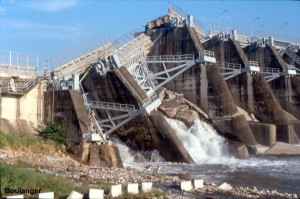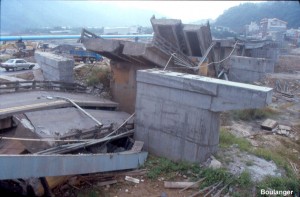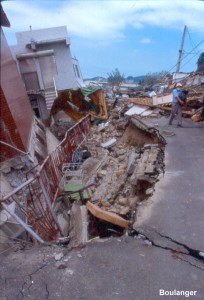Surface ruptures during the 1999 Chi-Chi earthquake caused extensive damage to civil infrastructure in Taiwan.
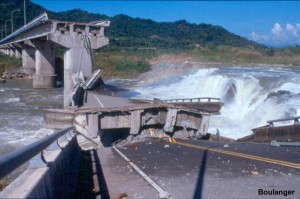
The waterfall in the river channel did not exist before the earthquake, but rather resulted from about 6 m of fault offset in the bedrock. The fault cut across this bridge, separating the supporting columns and causing collapse of the decks.
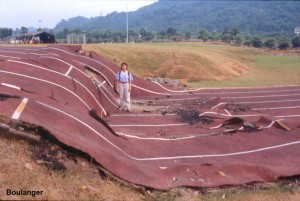
About 2 m of vertical offset developed where the thrust fault cut across this track field. Notice that the surface rupture is limited to a relatively narrow zone, with very little deformation of the ground surface on either side.

